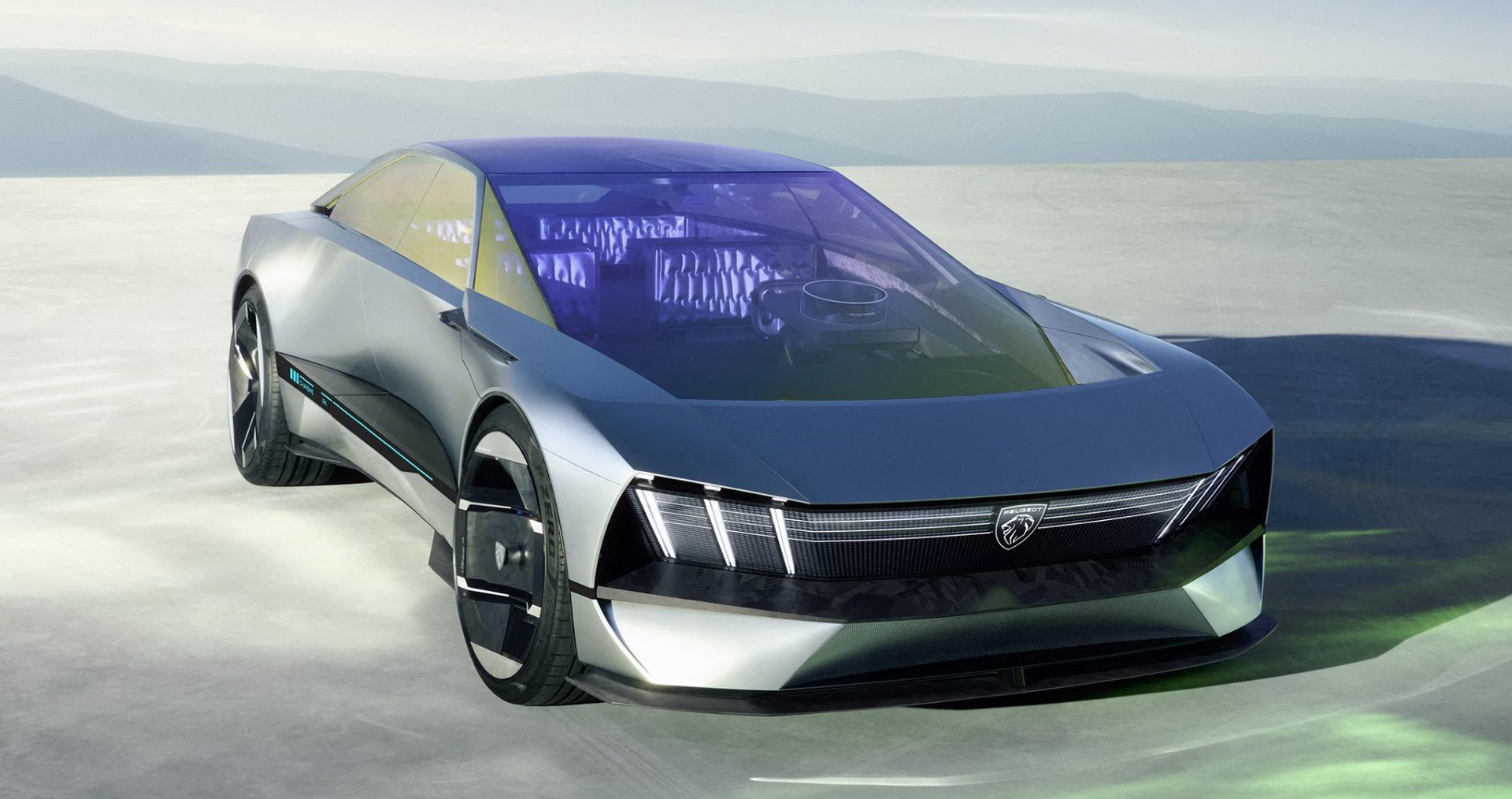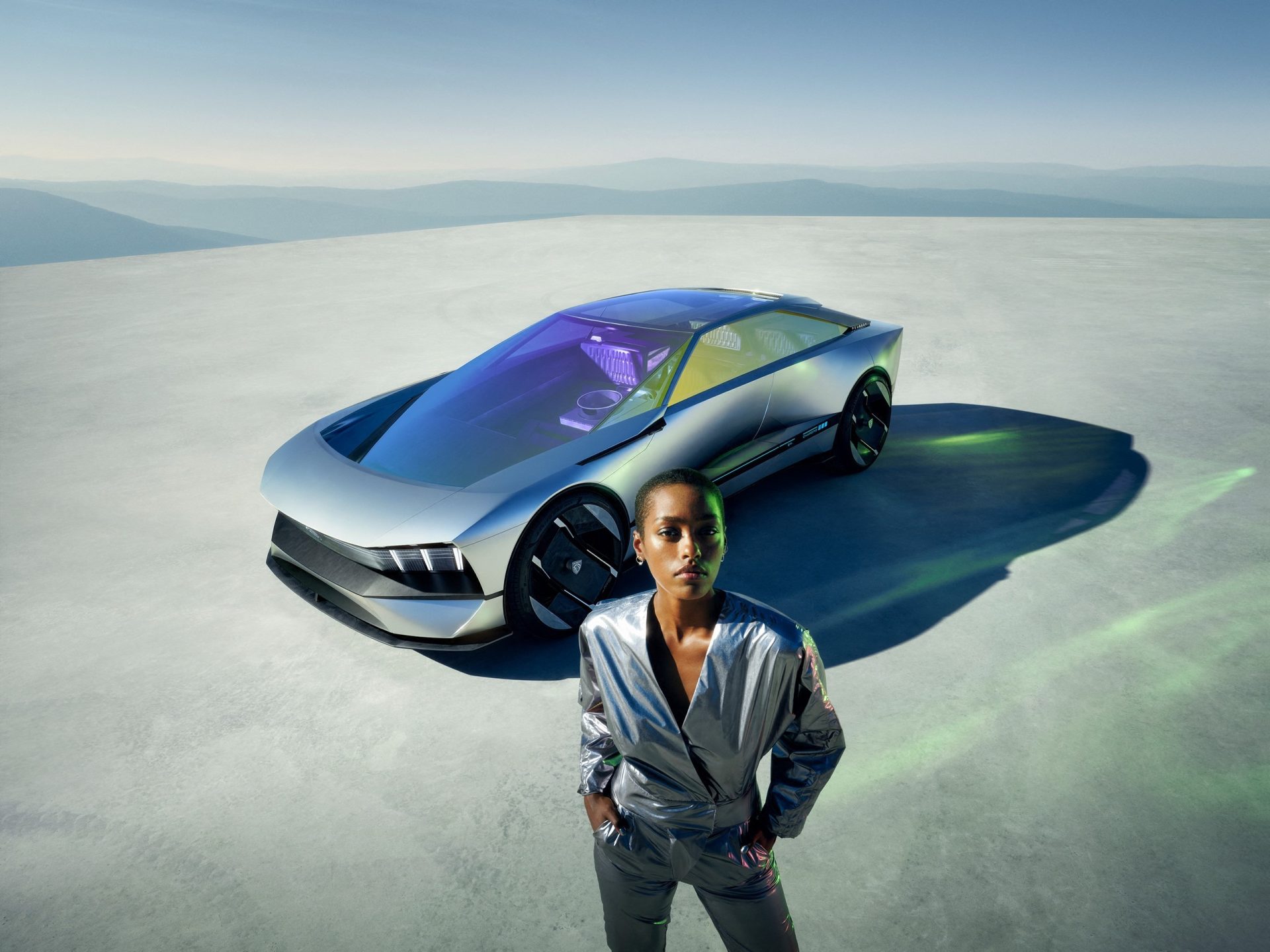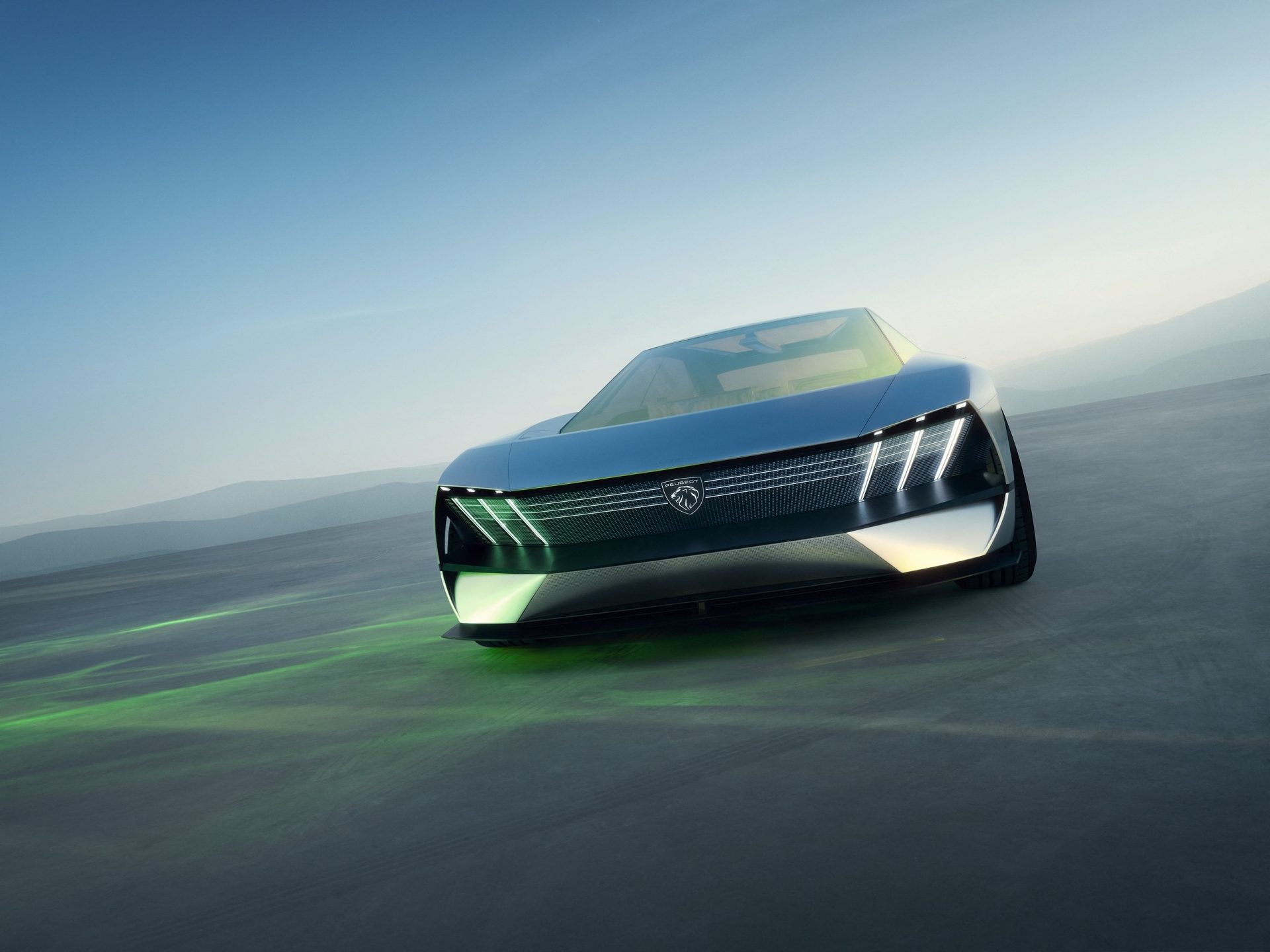Rumors late last year that Stellantis-brand Peugeot would be introducing its Inception Concept vehicle chock full of technical innovations and a futuristic body design came to light. The French brand revealed the futuristic-looking concept car in Las Vegas at the at 2023 Consumer Electronics Show.

The fully electric Inception Concept brings some impressive numbers to the performance category of electromobility. Two compact motors, one at the front and one in the rear, powered by a 100 kWh battery, combine to generate 671 hp (500kW or 680 ps). Acceleration from a standstill to 62 mph (100 kph) takes place in just under three seconds.
The robust battery will enable the Inception Concept to travel 497 miles (800 km) on a single charge with an energy consumption rate of just 12.5 kWh per 62 miles (100 km). In addition, the vehicle allows for an extra 19 miles (30.5 km) of range to be added in one minute and 93 miles (150 km) of additional range in five minutes with its 800V technology and can also be charged wirelessly by induction.

Built atop the largest of Stellantis’ four “BEV-by-design” platforms going forward from 2023, the STLA Large, the Inception Concept comes with the silhouette of a low (1.34 m or 4 ft 4 in) saloon and measures 5 m (16 ft 40 in) in length.
Peugeot describes the Inception Concept as having “new, simpler and more refined design language” that will be introduced on other models from 2025.
The front hosts a modular glass light feature that includes sensors, with the distinctive 3D magnified Peugeot logo in the center. This is made up of a single piece of glass with the logo in the center, magnified by the 3D luminescent effect. Both ends of the front glass panel display the new light signature with Peugeot’s distinctive claw design.

A Tech Bar similar to what we saw on the Sony-Honda Afeela’s first prototype, runs horizontally along the doors that communicate messages to the driver and passenger as they approach. The Tech Bar houses many sensors, and radars, and will display information such as battery charge levels.
The interior is essentially a capsule of glazed glass that includes the windscreen, that stretches all the way to where the hood should be, side windows, and quarter windows. The glass itself designed for architecture has been treated with metal oxides (a process originally used to treat the visors on NASA astronaut helmets) to optimize thermal properties.
It is void of any dashboard, crossbar, or bulkhead for a completely open environment to see the road ahead. All interior fabrics are sustainable materials, such as the velvet upholstery which is made from 100% recycled polyester. AI inside the vehicle will recognize the driver and passengers and adjust comfort settings like seat posture, temperature, driving mode, and multimedia preferences as desired by each occupant.
Peugeot’s next-generation i-Cockpit is inspired by video games with its Hypersquare control system, eliminating the need for a conventional steering wheel. Instead, the car is driven by steer-by-wire technology and controlled with digital controls.
The Hypersquare houses a tablet-like screen with pictograms displaying controls for the different systems in the vehicle that can be ergonomically set by a thumb, without removing a hand from the steering column. Peugeot plans to have Hypersquare technology available on a next-gen model before the of the decade.
The concept car incorporates tech modules powered by artificial intelligence (AI) in the form of STLA Brain, STLA SmartCockpit, and STLA AutoDrive and shapes the future of Peugeot electrified mobility. STLA AutoDrive enables Level 4 autonomous driving. When activated, the Hypersquare retracts and a large panoramic screen deploys, sliding out from the floor.
The Inception Concept represents Peugeot’s movement toward a 50% reduction in its European carbon footprint by more than 50% by 2030 and hit carbon neutrality by 2038. Peugeot will introduce five new all-electric vehicles over the next two years and by 2030, all cars sold in Europe will be all-electric.








